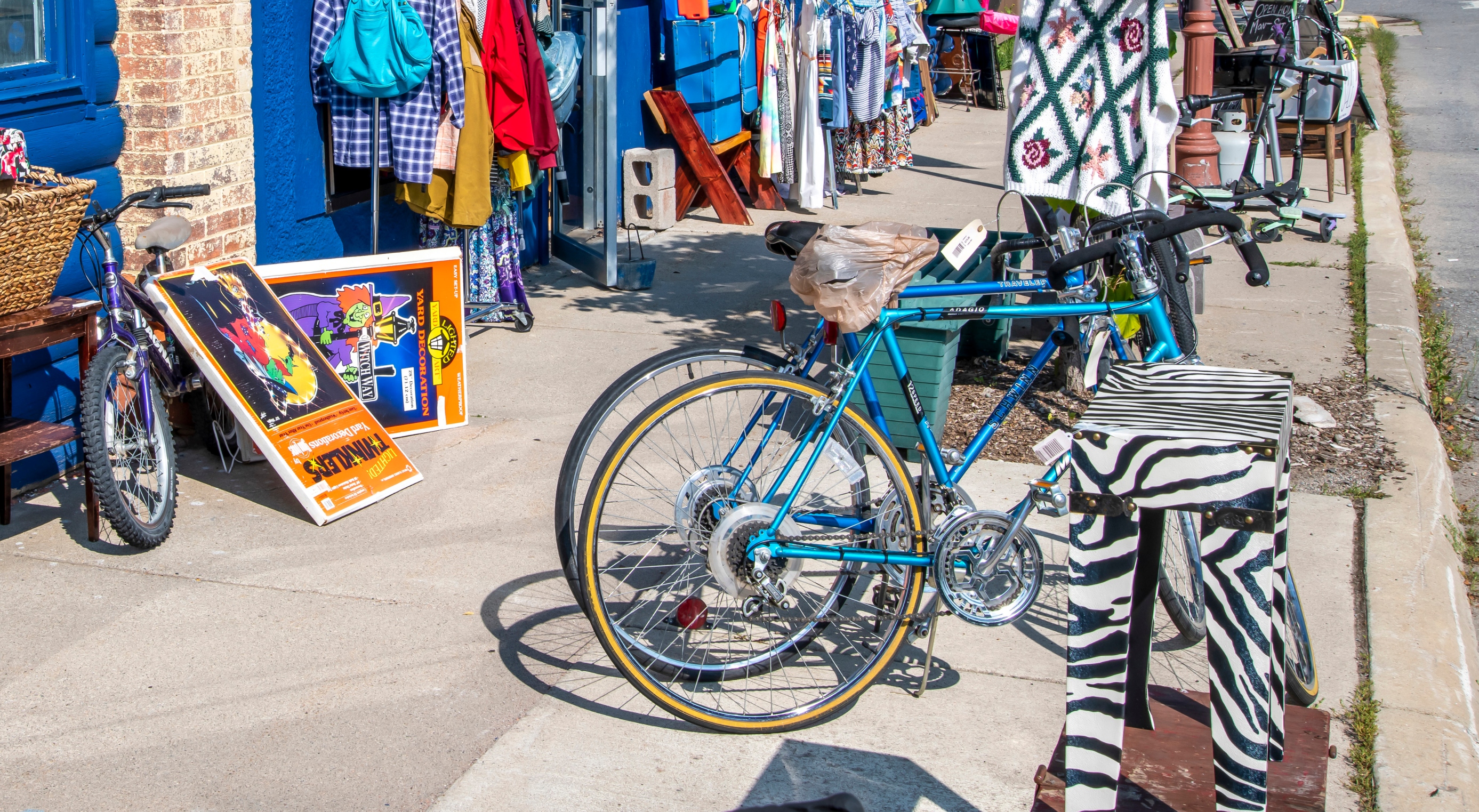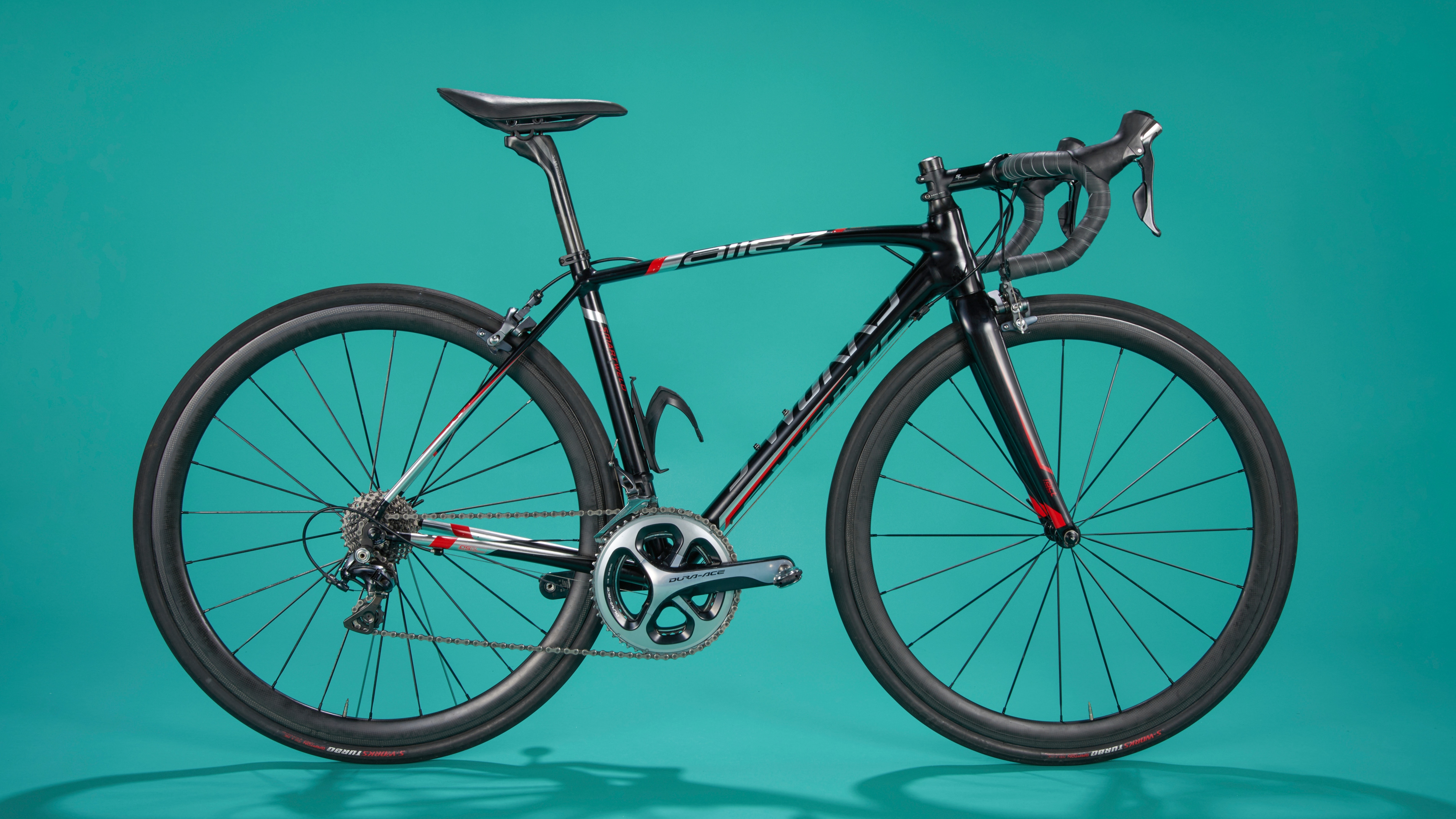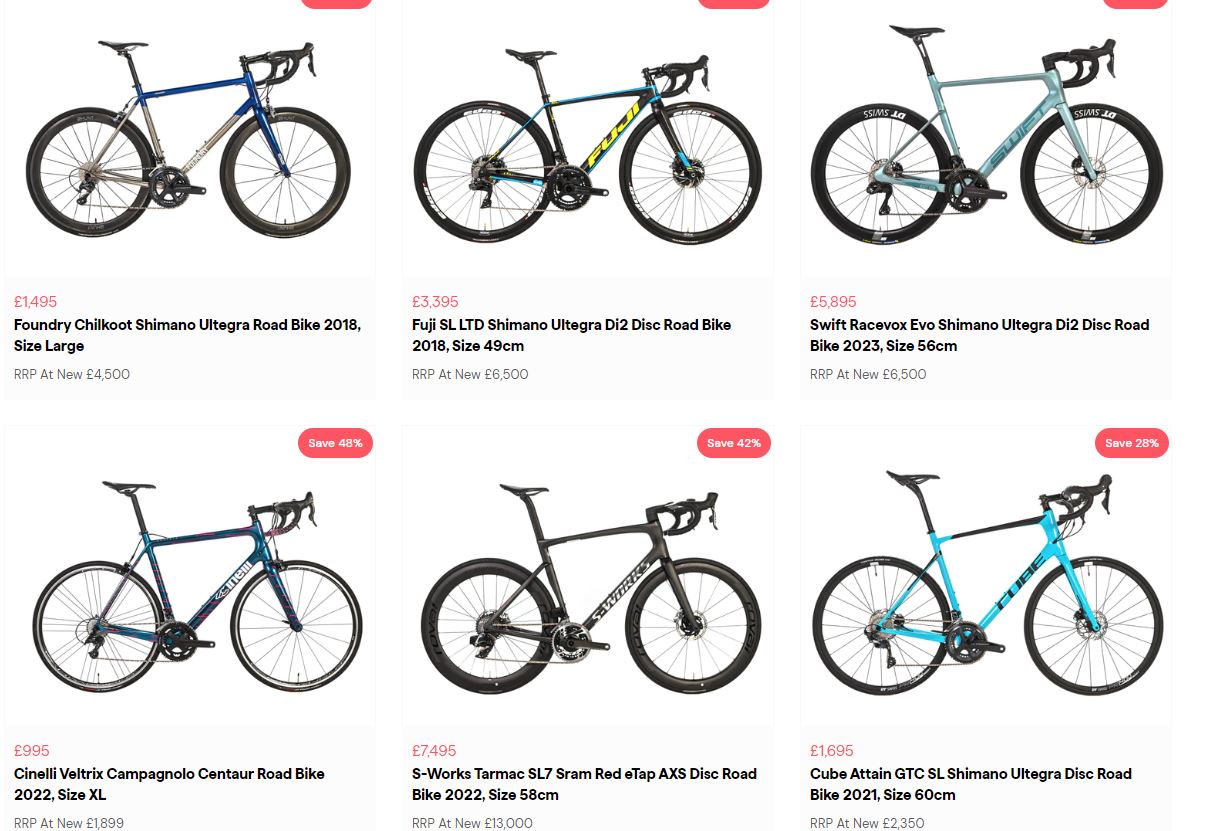How to save money (and the planet) by buying secondhand, without experiencing buyer's regret
Buying a used bike needn’t be a risk, can save you a lot of money and is good for the environment


With both bikes and components seemingly more expensive than ever, the secondhand market holds plenty of appeal for those looking for a more affordable option.
Certainly, there are savings to be had. Like a car, a bike’s value quickly diminishes with use, which means that even a newer road or gravel bike, with few miles on the clock, should still be significantly cheaper than retail. And given the propensity of cyclists to swap out wheelsets, saddles, handlebars and more in the pursuit of marginal gains, making a few upgrades via the secondhand marketplace is a solid an option.
Buying used is also better for the planet; a refurbished secondhand bike that might otherwise of been heading for landfill is instead given a new lease of life. Typically these will be from dedicated secondhand bike shops or non-profits and charities that upscale unwanted donations. There is also the private sale route, but buying from a reputable shop is likely your safest option.
Over the years our Cycling Weekly team has taken advantage of the secondhand market. Take Sam Gupta, CW’s Video Manager. Sam, while still working in a bike shop, coveted a new carbon race bike. Unable to afford one from new, he instead searched online marketplaces for something more affordable in his size.
He found it in the shape of a Specialized S-Works Allez. Owned by a local racer, the bike had been used for a year but was now being moved on before the new racing season began. As a result, Sam ended up with a bike of his dreams, and one he still owns today.
Product lifecycles and environmental concerns
We tried it...

Do you even need this year’s best road bike? Bicycles typically have major updates on a multi-year cycle of at least three years, some even longer; the latest Specialized Allez, released in Summer 2023, replaced the previous model which was launched in 2017, for example.
The new Allez has some pretty major changes from the old model: the switch from rim to disc brakes, added tyre clearance and fender/mudguard mounts, so there are good reasons to favour it over the older model.
Get The Leadout Newsletter
The latest race content, interviews, features, reviews and expert buying guides, direct to your inbox!
More recently Trek updated its Madone race bike , just two years after it had received a major overhaul. The new model is lighter and more of an all-rounder. However, if you’re after an aero race bike loaded with modern tech, like Trek’s IsoSpeed system, then the previous generation Madone will still deliver just that. Find it used and you’ll likely be saving a a considerable amount of money compared to a new model.
However, in general, between major updates, changes between model years are almost always quite small. Typically the major change is the colour of the paint. That may be accompanied by small changes in spec. These usually represent a downgrade rather than an upgrade though: cheaper wheels, less expensive tyres, swap-outs of groupset components, as brands try to keep their bikes to an often round number price point whilst inflation creeps in everywhere else.
So a secondhand bike that’s a few years old may not be that different under the enamel to a box-fresh new bike, and it might be better specced.
Secondhand shopping is more sustainable, too. New bikes and their components are mostly made in the Far East and shipped to markets to sell. There’s the further environmental cost in the disposal of used bikes, particularly those with carbon frames, which are difficult to recycle and often end up in landfill.
“There’s a huge ecological impact to buying a used bike over a new one, which we think is under-emphasised,” says Josh Hobbs, sales director at Cycle Exchange in Kingston Upon Thames, Surrey, which specialises in selling quality used bikes, points to the major reasons why used bikes come up for sale.
“Surprisingly in our own internal research, we found that this is very low down on a consumer’s priority list when buying secondhand, certainly below value, quality guarantee, trust and service.
“However collectively we can make the right environmental steps forward and still deliver value and quality for the customer - which is our ethos at Cycle Exchange.”
Why do people sell bikes secondhand?

The road bike section at Cycle Exchange is awash with high quality options
Some people buy a bike, spurred on by the exploits of Tour de France riders, only to find that they don’t enjoy cycling. The bike languishes in the garage until they decide to sell it a few years down the line to make space for their newest fitness gadget.
Or, there's the rider who just bought the wrong bike. We know of one rider who bought a Dura-Ace equipped Trek Emonda a few years back. He could never get comfortable on it and reverted to riding his old bike. A year or so down the line, he sold the Emonda for thousands less than he paid for it.
Unearth one of these machines with the right size and spec and you’ll get a bike that’s perhaps a couple of years old, with almost no wear, and that has hardly been ridden. It’s unlikely that it will have seen much rain either.
“People often buy bikes and just don't use them anymore, or as they thought they would (eg post-lockdown),” Hobbs says. “Interest in a newer version is driven by new model releases and the inclusion of the latest tech. For a lot of people, they have to sell their current bike before they can get a new one due to the cost,” he adds.
Others buy a bike that simply doesn’t fit them. Nas Karimi, head of bike fitting at Pearson Cycles in South London reckons that over half of cyclists are riding bikes that aren’t the right size or aren’t set up correctly for them.
This results in a sub-optimal ride experience and discomfort, which may dissuade someone from riding a perfectly good bike, resulting in a little-ridden bike being put up for sale a year or two down the road.
Hobbs concurs: “We find there are other reasons people sell, such as a poor bike fit when they initially bought it. So, they need to sell it so they can get a bike that they actually can ride comfortably.”
People’s circumstances may change for other reasons too or they may not have bargained for the ongoing cost of maintaining an expensive road bike.
All of this creates a steady stream of secondhand bikes in good condition, many just a few years old. They may not be this year’s models but they will still function just as well.
Check your potential purchase
Alongside these nearly-new bikes, you’ll find bikes that have been ridden thousands of miles, with riders looking to upgrade to something more premium or that better suits their riding style.
Some of these bikes may have had major spec upgrades along the way – new wheels are a favourite – and their worn parts may have been replaced. Others may have been left to slowly wear out.
Even so, you may find that a few choice changes, such as a swap-out of drivetrain components and cables, will restore the bike to a perfectly rideable condition. But spotting potential problems isn’t straightforward.
Bangs and bashes
The most tricky thing to assess with a potential secondhand purchase is the frame’s condition. It may not be obvious if a frame has been crashed. With metal frames, you may be able to spot surface dents and dings which suggest that a frame has been involved in an accident. Paint touch-ups can also usually be spotted. It’s worth checking to see if any frame stickers have been applied, as these can be used by unscrupulous sellers to cover up ‘issues’.
But a carbon bike frame is trickier. A crash can result in delamination of the carbon fibre layers on the inside of the frame tubes. This may not show at all on the exterior and only be detectable by X-raying the frame.
Many metal-framed bikes are fitted with carbon forks, so the same issue of invisible crash damage may apply.
Checking a bike for potential damage or other hidden problems which might be pricey to fix requires an expert eye, so another increasingly popular option is to use a specialist reseller, such as Cycle Exchange.
“For crash or damage risk, you'll need to bring in someone with experience of checking bikes to eradicate that. Maybe ask the seller to produce a recent inspection report from a mechanic before sale,” Hobbs advises.
“E-bikes and carbon fibre bikes add to the potential complications and concern over lack of after-sale support,” he continues.
Buy from a specialist
While buying from an individual may get you a bargain, particularly if you know and trust the seller, maybe through a cycling club, for example, it can come with risks.
“Some people prefer to sell direct or via a peer-to-peer marketplace to get maximum value, alternatively there is a significant demand for a third-party seller like ourselves which removes a lot of hassle but comes at additional cost,” says Hobbs.
“Secondhand bikes don't usually have a warranty and there is also significant concern over whether it has been stolen. For stolen bikes you can try and trace the history and insist on documentation before buying, also be somewhat interrogative when purchasing e.g. does this bike fit the person selling it,” he advises.
There’s also the risk of buying a fake, as with this Cervélo RCA sent for sale to The Pro’s Closet in Colorado. Since the bike went to a third-party seller, its lack of authenticity was spotted, but that may not have been the case via an individual sale.
The bottom line: should you buy second hand?

Yes, Josh Hobbs, Sales Director, Cycle Exchange
The biggest advantage is a simple one: savings. As we all know, bikes have become crazy expensive since the pandemic, and it was never a cheap sport to begin with. By buying secondhand you’re able to get a lot more bike for your money. Additionally there is significant interest in giving bikes a second life as we strive to more sustainable consumption levels. As most bikes are shipped from abroad then further assembled, stored and shipped domestically, at a not insignificant cost to the environment, it makes so much sense to simply reuse one that's not required by the first owner anymore.

Thank you for reading 20 articles this month* Join now for unlimited access
Enjoy your first month for just £1 / $1 / €1
*Read 5 free articles per month without a subscription

Join now for unlimited access
Try first month for just £1 / $1 / €1
Paul started writing for Cycling Weekly in 2015, covering cycling tech, new bikes and product testing. Since then, he’s reviewed hundreds of bikes and thousands of other pieces of cycling equipment for the magazine and the Cycling Weekly website.
He’s been cycling for a lot longer than that though and his travels by bike have taken him all around Europe and to California. He’s been riding gravel since before gravel bikes existed too, riding a cyclocross bike through the Chilterns and along the South Downs.
-
 Remco Evenepoel hails end of 'dark period' and announces racing return
Remco Evenepoel hails end of 'dark period' and announces racing returnOlympic champion says comeback from training crash has been 'the hardest battle of my life so far'
By Tom Thewlis
-
 A bike rack with an app? Wahoo’s latest, and a hub silencer – Sea Otter Classic tech highlights, Part 2
A bike rack with an app? Wahoo’s latest, and a hub silencer – Sea Otter Classic tech highlights, Part 2A few standout pieces of gear from North America's biggest bike gathering
By Anne-Marije Rook